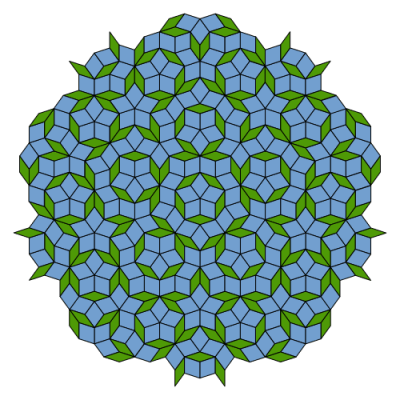When is a crystal not a crystal? When it’s a quasi-crystal, a paradoxical form of metal recently found in some 3D printed metal alloys by [A.D. Iams et al] at the American National Institute for Standards and Technology (NIST).
As you might remember from chemistry class, crystals are made up of blocks of atoms (usually called ‘unit cells’) that fit together in perfect repetition — baring dislocations, cracks, impurities, or anything else that might throw off a theoretically perfect crystal structure. There are only so many ways to tessellate atoms in 3D space; 230 of them, to be precise. A quasicrystal isn’t any of them. Rather than repeat endlessly in 3D space, a quasicrystal never repeats perfectly, like a 3D dimensional Penrose tile. The discovery of quasicrystals dates back to the 1980s, and was awarded a noble prize in 2011.

Quasicrystals aren’t exactly common in nature, so how does 3D printing come into this? Well, it turns out that, quite accidentally, a particular Aluminum-Zirconium alloy was forming small zones of quasicrystals (the black spots in the image above) when used in powder bed fusion printing. Other high strength-alloys tended to be very prone to cracking, to the point of unusability, and this Al-Zr alloy, discovered in 2017, was the first of its class.
You might imagine that the non-regular structure of a quasicrystal wouldn’t propagate cracks as easily as a regular crystal structure, and you would be right! The NIST researchers obviously wanted to investigate why the printable alloy had the properties it does. When their crystallographic analysis showed not only five-fold, but also three-fold and two-fold rotational symmetry when examined from different angles, the researchers realized they had a quasicrystal on their hands. The unit cell is in the form of a 20-sided icosahedron, providing the penrose-style tiling that keeps the alloy from cracking.
You might say the original team that developed the alloy rolled a nat-20 on their crafting skill. Now that we understand why it works, this research opens up the doors for other metallic quasi-crystals to be developed on purpose, in aluminum and perhaps other alloys.
We’ve written about 3D metal printers before, and highlighted a DIY-able plastic SLS kit, but the high-power powder-bed systems needed for aluminum aren’t often found in makerspaces. If you’re building one or know someone who is, be sure to let us know.










